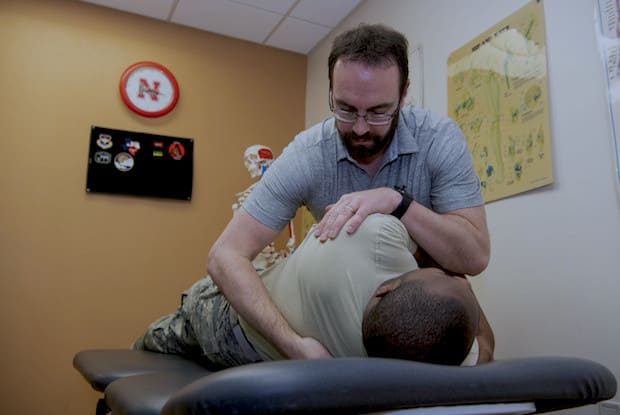Table of Contents
What is Vertigo?
Vertigo is a common symptom of several conditions. It is more likely to occur if you have suffered from a stroke, head injury, or ear infections. Over 69 million people in the United States have experienced a form of vertigo. Vertigo is a relatively common symptom of disorders like inner ear problems, Meniere's disease, chronic migraines, and benign paroxysmal positional vertigo (BPPV). BPPV is one of the more common causes of migraines. BPPV can be caused by rapid changes in head movement. [1]
Symptoms of vertigo can include:
- Unsteadiness or a loss of balance
- A feeling of floating, dizziness or heavy-headedness
- Lightheadedness or feeling faint
- A false sense of motion or spinning [1]
Betahistine (Serc) is typically prescribed to relieve vertigo symptoms, especially in Meniere’s disease. Betahistine works well for those with vestibular (inner ear) problems and increases blood flow to certain parts of the ear. Increasing the blood flow reduces the amount of fluid in the ear and relieves ear pressure and vertigo. Prescription medicines are helpful, but there are activities you can do at home to also improve your chronic dizziness. Read on to learn more about home remedies and exercises you can perform to improve vertigo symptoms. [2]
Get savings updates for Betahistine
Epley Maneuver
This exercise is a go-to strategy for many people who experience vertigo. It is especially helpful for those who experience BPPV. Follow these steps to perform this exercise at home (example given for right-sided BPPV):
- Sit upright on a flat surface with a pillow behind you, legs outstretched.
- Turn your head 45 degrees to the right
- When your head is tilted, quickly recline with your shoulders on the pillow and your head hanging onto the bed. Stay in this position for 30 seconds.
- In this position, turn your head to the left, a full 90 degrees, without raising your head off the bed (wait another 30 sec).
- In this position, turn your head to the left, a full 90 degrees, without tilting your neck (wait another 30 sec).
- Turn your whole body to the left, so you are completely on your left side. (wait another 30 sec).
- Sit up on the left side of the bed.
This exercise can be repeated three times in a row. You may feel dizzy during each movement, but that feeling should subside if it is done correctly. Someone may assist you with this maneuver by guiding your head. According to the Institute for Quality and Efficiency in Health Care says 52 out of 100 people experience relief from this maneuver. [3]
This exercise can also be used to relieve symptoms of vertigo. The Brandt-Daroff exercise is used for those with BPPV and sometimes labyrinthitis (inflammation of the inner ear). To perform this exercise at home, follow these steps: You can experience the maximum benefit from this exercise if you repeat this exercise in a set of 5 repetitions. This exercise can be repeated three times a day, up to twice a week. [4] This exercise can be done by yourself or with the help of a physical therapist. This exercise involves moving rapidly from lying on one side to the other. A physical therapist will typically perform this maneuver first to determine how your body is being affected by vestibular problems. Your vertigo symptoms should dissipate in a day or two if this procedure is done successfully. If you are still experiencing vertigo, your physical therapist may try this exercise again or the Epley maneuver. [3] Ginkgo biloba: Ginkgo biloba is a Chinese herb that can have a positive effect on vertigo symptoms. Gingko can be taken in liquid or capsule form. Several studies have found that Ginkgo extract can be effective in treating symptoms of dizziness. Those suffering from vertigo can take 240 milligrams of ginkgo biloba each day (divided twice daily) to help with balance problems. [5] Ginger Tea: Ginger is an ancient remedy for many ailments. The Journal of Acupuncture and Tuina Science found that ginger root can reduce vertigo's effect better than repositioning techniques. To make ginger tea, ginger root can be steeped in a cup of boiling water for 5 minutes. Drinking this tea twice a day to help with symptoms of dizziness and nausea. [6] Drink water: Dehydration can be a major factor in vertigo. If you stay hydrated, you can minimize dizziness and balance issues. To stay hydrated, you should consume 8 to 12 cups of liquid per day. This includes all liquid, but water is the best option because water has no calories and is caffeine-free. [6] Acupressure is similar to acupuncture but without the needles. The goal of acupressure is to promote wellness and relaxation. Acupressure can benefit those with vertigo through the stimulation of pressure points throughout the body. Before implementing these techniques at home, you should seek the guidance of a licensed acupressurist to learn which spots on the body need to be stimulated. The P6 acupressure method can be used to treat vertigo symptoms. This method involves locating the pressure point in the two tendons between the inner forearm and the wrist. An acupressurist will let you know of any other points that may help with vertigo. [7] Here are some tips for effective acupressure: The content in this article is intended for informational purposes only. This website does not provide medical advice. In all circumstances, you should always seek the advice of your physician and/or other qualified health professionals(s) for drug, medical condition, or treatment advice. The content provided on this website is not a substitute for professional medical advice, diagnosis or treatment.
Brandt-Daroff Exercise
Semont-Toupet Maneuver
Foods for Relief

Acupressure

